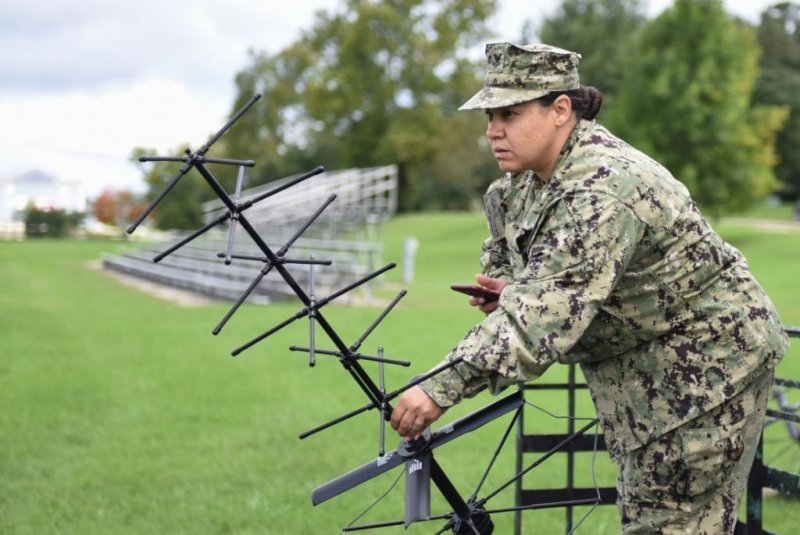Construction Electrician 2nd Class Corinna Wentz,installs a satellite communications antenna for a demonstration of the Mobile User Objective System at Fort George Mead, Md., on Oct. 26, 2019. Photo by MCS1 Samuel Souvannason/U.S. Navy
Nov. 11 (UPI) -- General Dynamics Mission Systems has been awarded a $783 million contract for sustainment of the Navy's next-generation satellite communications system.
The contract, announced Friday by the Department of Defense, covers ground system sustainment of the Mobile User Objective System for the next decade, through 2029.
MUOS uses a constellation of five satellites in global connectivity to earthbound terminals, platforms, tactical operators and operations centers. The Naval Information Warfare Systems Command declared MUOS operational in October after final testing by the Army, Navy and Marine Corps.
The full operational capability of of the system was expected in 2017, a deadline set in 2016 after the system was called ineffectively operational.
Each satellite carries a communications payload to maintain Department of Defense narrowband communications during the transition to MUOS, and the advanced MUOS Wideband Code Division Multiple Access capability. The system can carry 10 times the data of the slower Ultra High-Frequency Follow-On satellite communication system developed in the 1990s, which it replaces.
The MUOS system can also simultaneously transmit voice, video and mission data to military networks. Its radios operate from anywhere around the world at speeds considered comparable to those of smartphones delivering photos to social media.
A Defense Department statement on Friday said the system provides "modern netcentric communications capabilities while supporting legacy terminals," indicating a lack of obsolescence of existing receiving equipment.
It is already in use by the Navy and Marine Corps humanitarian response and disaster assistance.
"Now, these same advanced communications capabilities will be available in the tactical warfare environment," John Pope, chief of the Navy's Program Executive Office for Command, Control, Communications, Computers, Intelligence and Space Systems [PEO C4I and Space Systems], said in October. "The advantages MUOS provides will help the warfighter compete, deter and win on the battlefield."
While the U.S. Air Force is responsible for most Defense Department space-oriented acquisitions, the Navy controls the MUOS and its Ultra-High Frequency narrowband predecessor.
Future satellite communications projects will be under the direction of the Air Force, a transfer announcement in May said, in line with President Donald Trump's plan to consolidate military responsibilities in space in the U.S. Space Force. Until the Space Force can stand on its own, it is within the authority of the Air Force.















